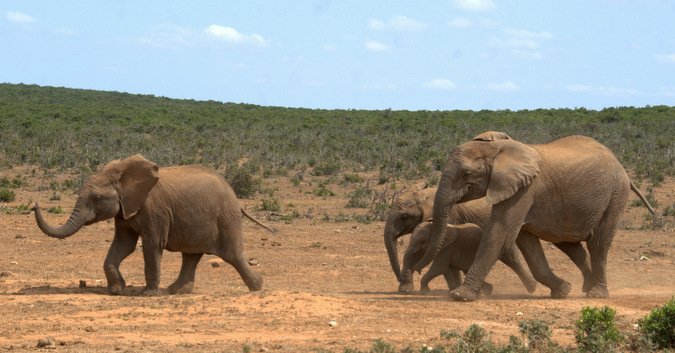Legs, locomotion, and posture of the elephants

An Asian elephant walking
To support the animal’s weight, an elephant’s limbs are positioned more vertically under the body than in most other mammals. The long bones of the limbs have cancellous bone in place of medullary cavities. This strengthens the bones while still allowing haematopoiesis.[62] Both the front and hind limbs can support an elephant’s weight, although 60% is borne by the front.[63] Since the limb bones are placed on top of each other and under the body, an elephant can stand still for long periods of time without using much energy.
Elephants are incapable of rotating their front legs, as the ulna and radius are fixed in pronation; the “palm” of the manus faces backward.[62] The pronator quadratus and the pronator teres are either reduced or absent.[64] The circular feet of an elephant have soft tissues or “cushion pads” beneath the manus or pes, which distribute the weight of the animal.[63] They appear to have a sesamoid, an extra “toe” similar in placement to a giant panda’s extra “thumb”, that also helps in weight distribution.[65] As many as five toenails can be found on both the front and hind feet.[11]
Elephants can move both forwards and backwards, but cannot trot, jump, or gallop. They use only two gaits when moving on land: the walk and a faster gait similar to running.[62] In walking, the legs act as pendulums, with the hips and shoulders rising and falling while the foot is planted on the ground. With no “aerial phase”, the fast gait does not meet all the criteria of running, although the elephant uses its legs much like other running animals, with the hips and shoulders falling and then rising while the feet are on the ground.[66]
Fast-moving elephants appear to ‘run’ with their front legs, but ‘walk’ with their hind legs and can reach a top speed of 25 km/h (16 mph).[67] At this speed, most other quadrupeds are well into a gallop, even accounting for leg length. Spring-like kinetics could explain the difference between the motion of elephants and other animals.[67] During locomotion, the cushion pads expand and contract, and reduce both the pain and noise that would come from a very heavy animal moving.[63] Elephants are capable swimmers. They have been recorded swimming for up to six hours without touching the bottom, and have travelled as far as 48 km (30 mi) at a stretch and at speeds of up to 2.1 km/h (1 mph).[68]
